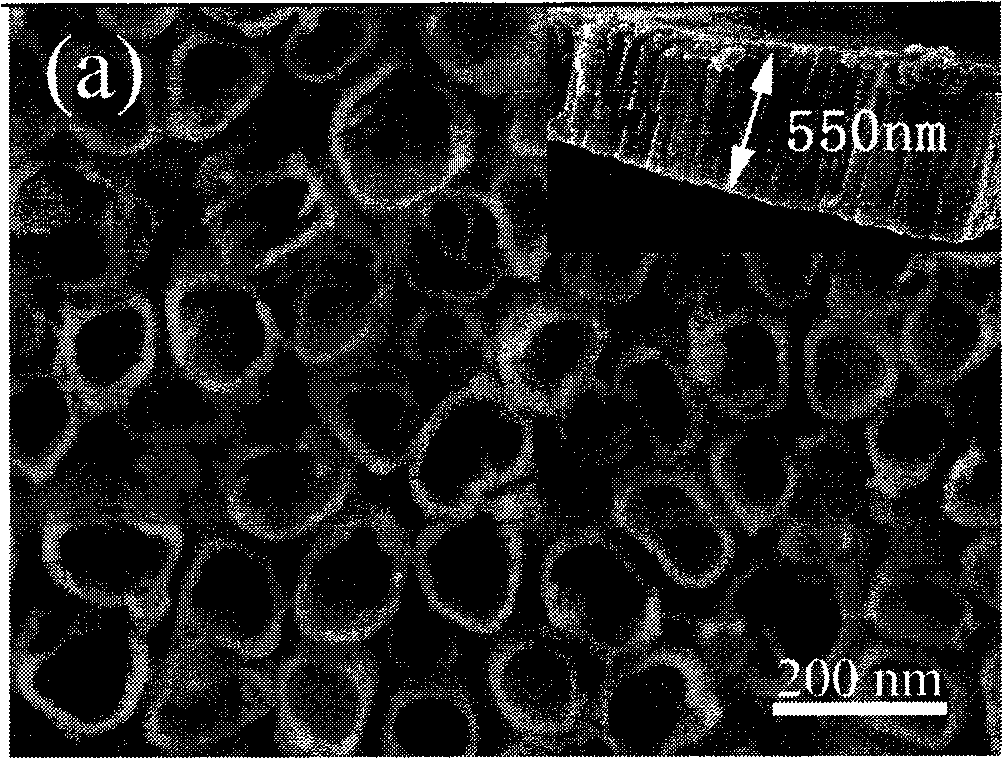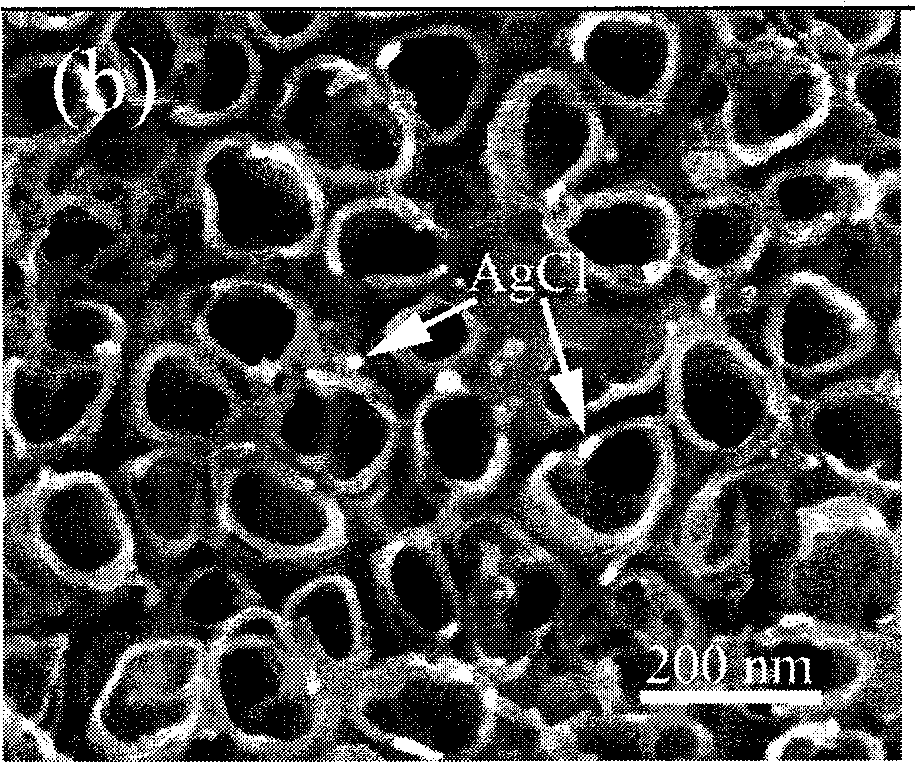Ag/AgCl/TiO* nanotube array plasma visible-light photocatalyst and preparation method thereof
A nanotube array, photocatalyst technology, applied in catalyst activation/preparation, metal/metal oxide/metal hydroxide catalyst, physical/chemical process catalyst, etc., can solve problems such as hindering the promotion and application of photocatalytic materials
- Summary
- Abstract
- Description
- Claims
- Application Information
AI Technical Summary
Problems solved by technology
Method used
Image
Examples
Embodiment 1
[0033] For the preparation of visible light active Ag / AgCl / TiO 2 Nanotube array plasmonic photocatalyst, the titanium sheet should be anodized first to generate amorphous TiO on the surface 2 array, and then the amorphous TiO 2 Calcination transforms to anatase, and then in the anatase phase TiO 2 Ag / AgCl particles are deposited on the walls of the arrayed nanotubes. The detailed experimental process is as follows: In a 250 ml polytetrafluoroethylene beaker, prepare 150 ml of electrolyte solution with a concentration of 0.5 mol / liter of phosphoric acid and 0.14 mol / liter of sodium fluoride, with the platinum sheet as the cathode and the titanium sheet as Anode, anodized at a voltage of 20V for 1 hour, and amorphous TiO was formed on the surface of the titanium sheet 2 array of nanotubes. Amorphous TiO 2 The nanotube array is placed in a muffle furnace and calcined at 450°C for 2 hours, and the amorphous state is transformed into anatase. anatase phase TiO 2 Nanotube arr...
Embodiment 2
[0050] In order to prove that nano silver, AgCl and TiO 2 array on Ag / AgCl / TiO 2 Synergy and Ag / AgCl / TiO in plasmonic photocatalysts 2 The visible light plasmonic photocatalytic mechanism of different nanotube arrays was compared (see Table 1). The results showed that TiO alone 2 Array, AgCl / TiO 2 Arrays without visible light photocatalytic activity, Ag / TiO 2 The array has weak activity at the beginning of visible light irradiation, and the activity gradually disappears with the increase of irradiation time, while the Ag / AgCl / TiO 2 The array has strong visible light photocatalytic activity. This shows that Ag / AgCl / TiO 2 The activity of plasmonic photocatalyst is nano-silver, AgCl and TiO 2 The result of array synergy. Ag / TiO 2 It is active at the beginning of illumination because of the plasmonic visible light absorption effect of nano-silver. Under the excitation of visible light, nano-silver generates electron-hole pairs, resulting in photocatalytic activity. Since ...
Embodiment 3
[0052] In order to test the effect of HCl concentration on the photocatalytic activity of the sample, in addition to the different HCl concentrations, other reaction conditions such as: anodic oxidation voltage (20V), oxidation time (1 hour), calcination temperature (450 ° C), calcination time (2 hours) , AgNO 3 Concentration (0.1 mol / liter) etc. are all identical with embodiment 1. The results show that when the concentration of HCl is in the range of 0.5-2 mol / L, the prepared Ag / AgCl / TiO 2 Nanotube arrays have good photocatalytic activity. In experiments, it was found that the optimum HCl concentration was 0.8-1.2 mol / liter.
PUM
| Property | Measurement | Unit |
|---|---|---|
| Aperture | aaaaa | aaaaa |
| Tube wall thickness | aaaaa | aaaaa |
| Tube chief | aaaaa | aaaaa |
Abstract
Description
Claims
Application Information
 Login to View More
Login to View More - Generate Ideas
- Intellectual Property
- Life Sciences
- Materials
- Tech Scout
- Unparalleled Data Quality
- Higher Quality Content
- 60% Fewer Hallucinations
Browse by: Latest US Patents, China's latest patents, Technical Efficacy Thesaurus, Application Domain, Technology Topic, Popular Technical Reports.
© 2025 PatSnap. All rights reserved.Legal|Privacy policy|Modern Slavery Act Transparency Statement|Sitemap|About US| Contact US: help@patsnap.com



